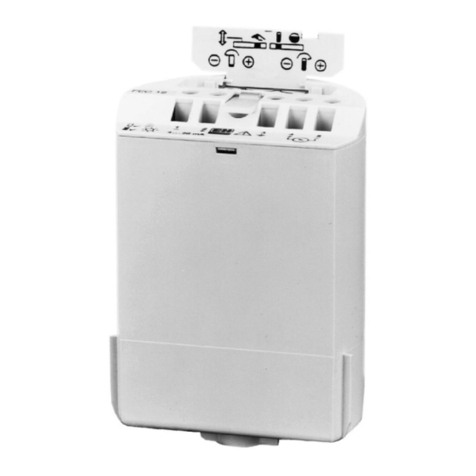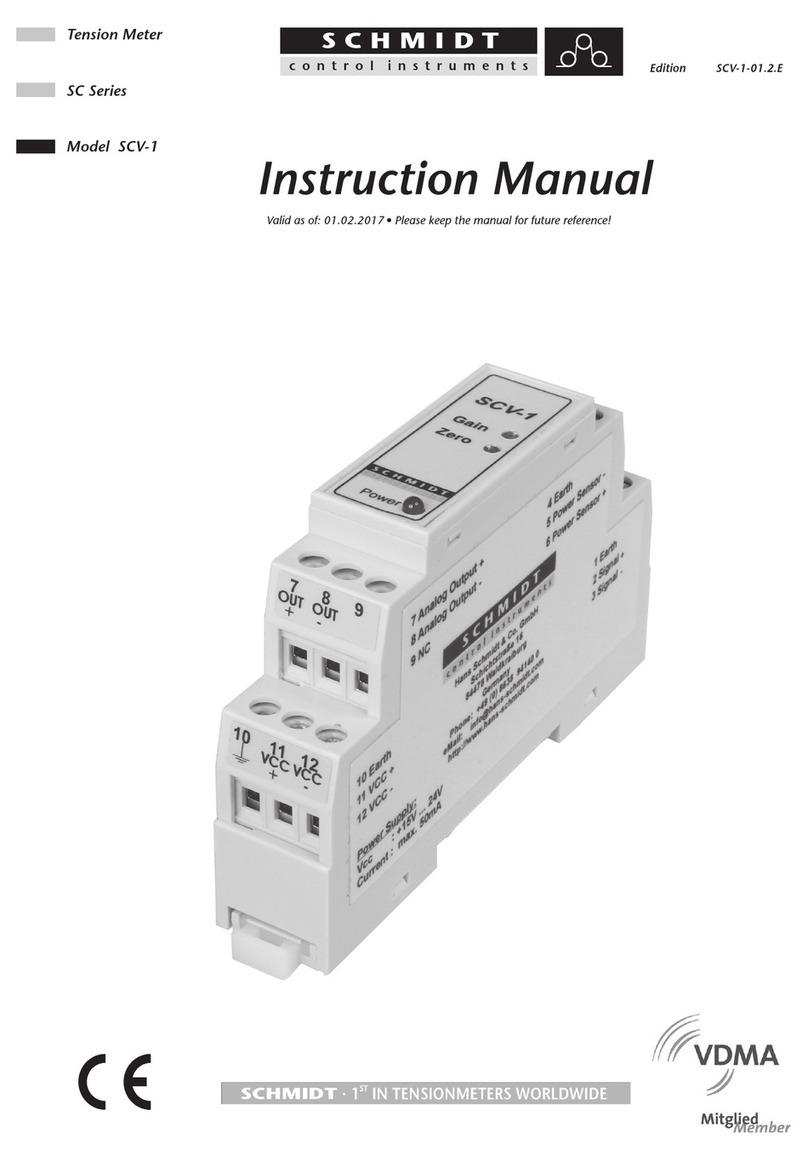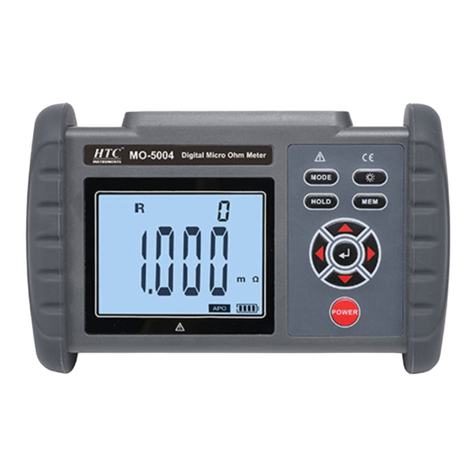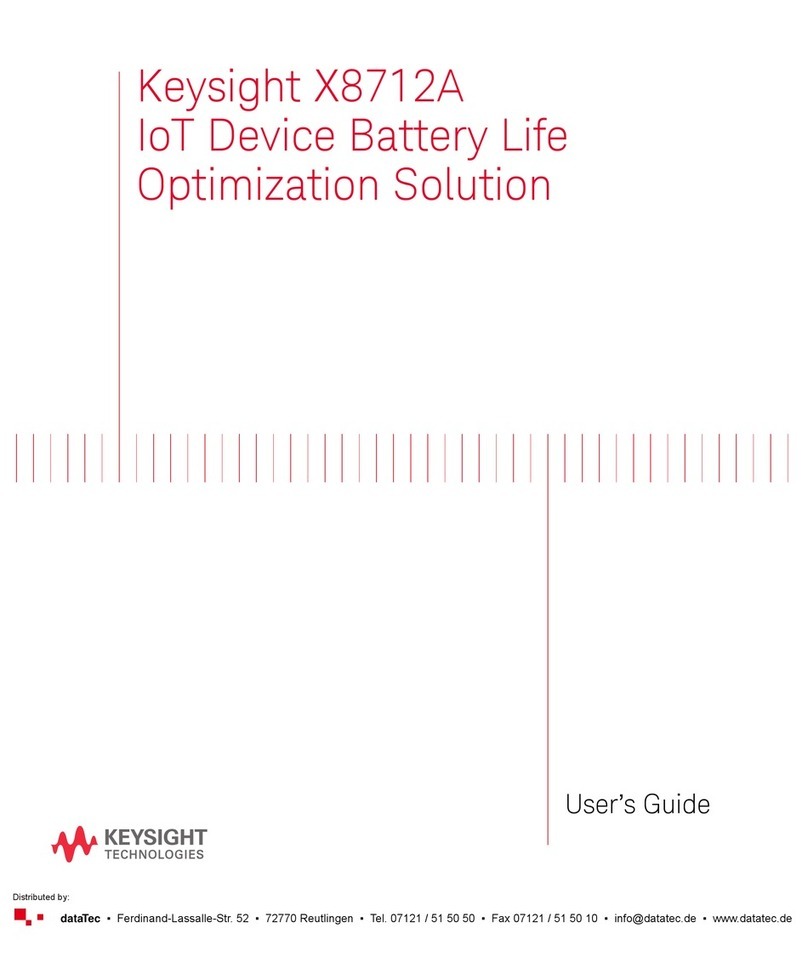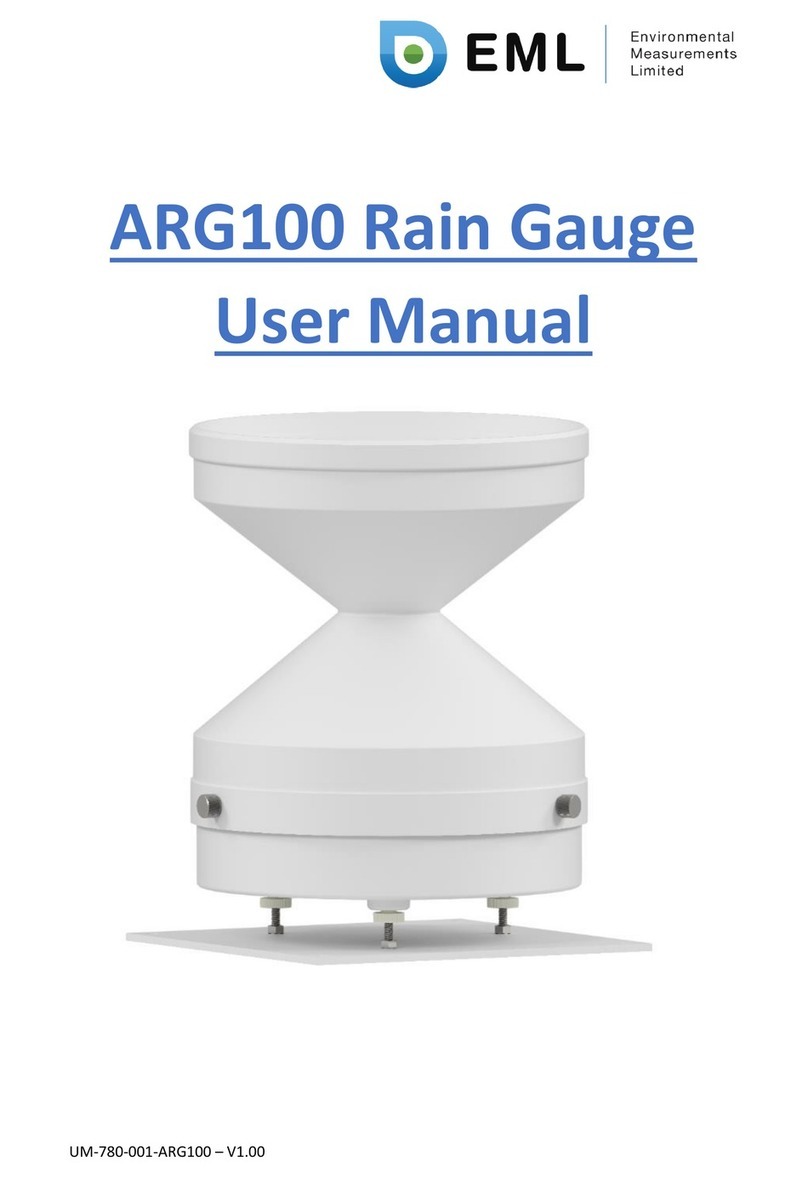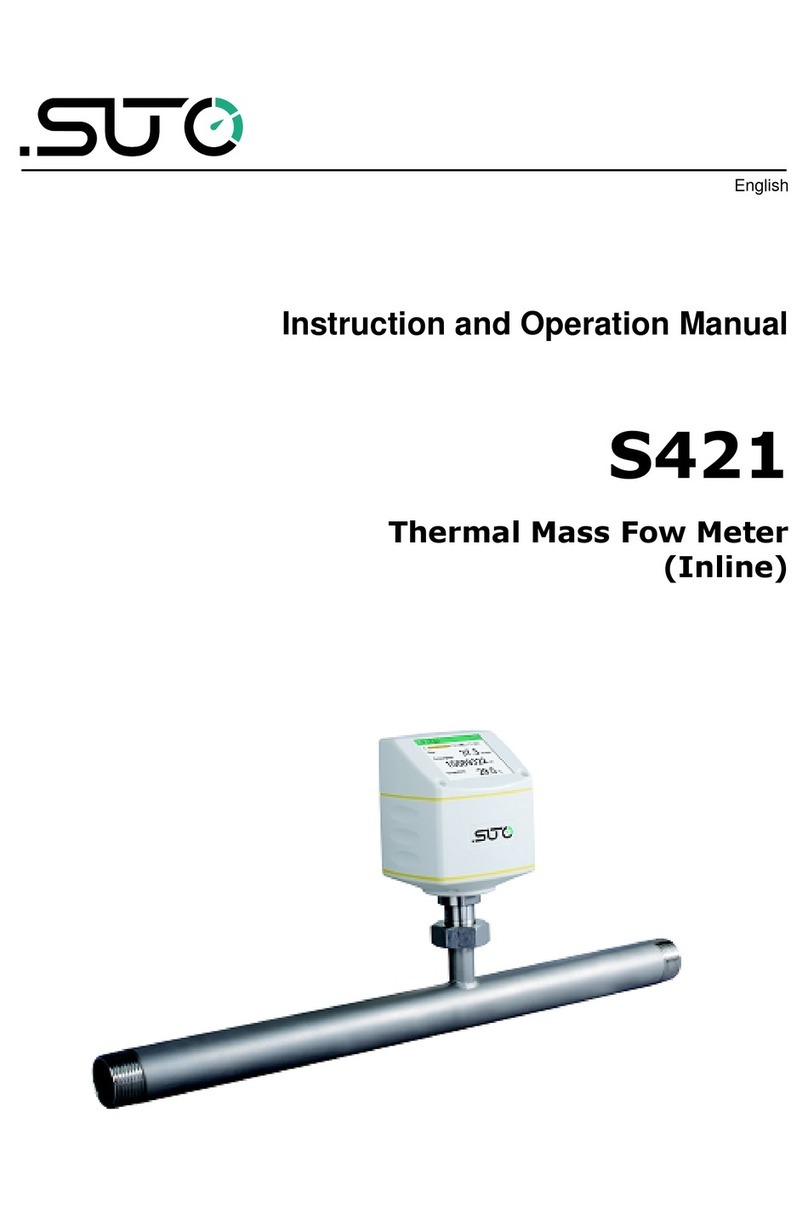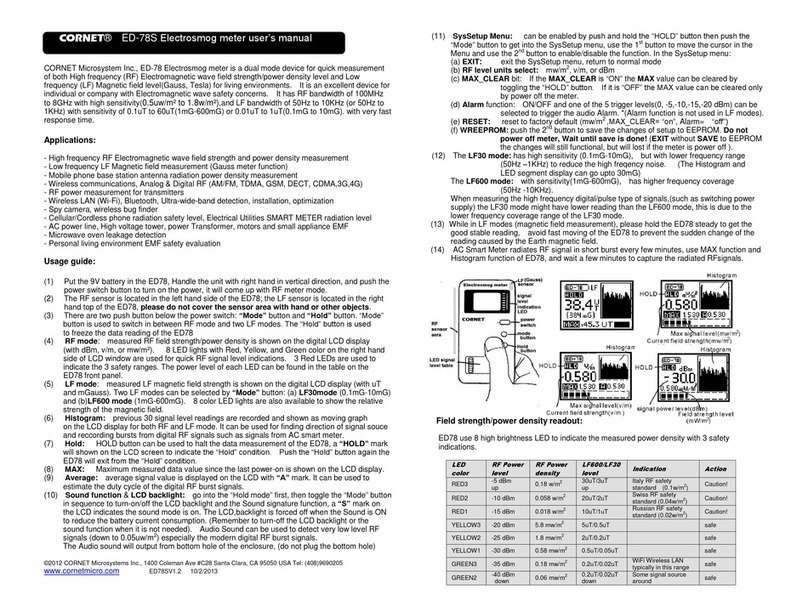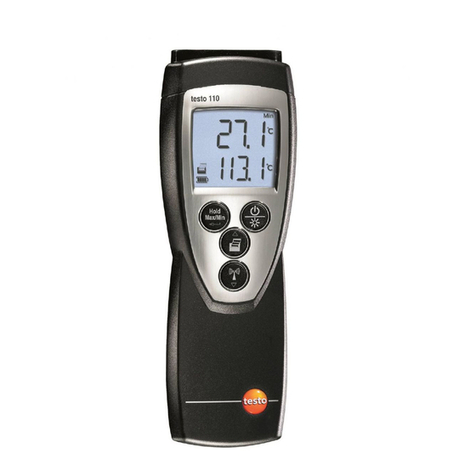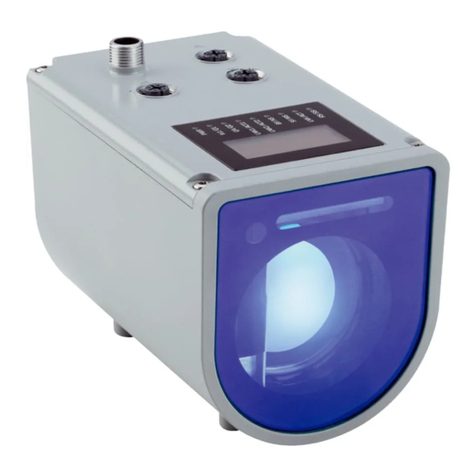Environmental Instruments Fluoroprobe FL-2-S0 User manual

FluoroprobeR
O & M Manual
MODEL FL-2-S0
NEW WEBSITE: WWW.thefluoroprobe.com
ENVIRONMENTAL INSTRUMENTS, LLC
144 Industrial Park Drive
SuiteA-3
Waynesville, NC 28786
From Process Control Services
Phone: (02) 9319 1808 Fax: (02) 9319 2786

Fluoroprobe
TABLE OF CONTENTS
Section 1 Product Description
Section 2 Control Settings - Description
Control and Set Points
Section 3 Introduction to Calibration
1. Air Saturated Water Calibration
2. Zero Calibration
3. Air Calibration
4. Calibration Using Hand Held DO Meter
5. Probe and Sensor Maintenance
6. Troubleshooting and Tips
Figure -1 Installation Illustration
Figure -2 Face Plate – Descriptions/Drawing
Figure -3 Relay Description - Terminal Location
Figure -4 4 to 20 mA Board Drawing/Connection
Figure -5 Fluoroprobe Specifications
Figure -6 Calibration Tables and Altitude Correction Factors
Figure -7 Warranty

Fluoroprobe
TM
(FL-2) O&M Manual
Product Description
Section 1
The Fluoroprobe
TM,
FL-2 is an environmental instrument with a newly patented optical
sensor designed for long term monitoring and control of dissolved oxygen in remote and
harsh environments. The probe is designed to provide years of service without the
constant maintenance required by galvanic or polargraphic type probes.
The Fluoroprobe
TM
is housed in a PVC body or stainless steel body with 0-ring sealed
Duran end caps. The entire contents of the probe are potted with epoxy to eliminate any
air space or leaks. Warning: If any attempt is made to open the probe, the end
connections will break loose and will not be able to be placed back together. The
warranty will then be voided.
The sensor is glass bonded on the end of the probe. There are no parts to replace or
maintain, the lifetime of the sensor is based solely on the user’s application and the
surrounding environment’s effect on the silicone rubber. It is suggested that the sensor be
wiped off as needed, (at least once a month with a soft toothbrush or cloth) for
preventative maintenance. An optional solar powered brush for cleaning the sensor can
be ordered mounted on a float for remote or aquaculture applications. Unlike polargraphic
and Galvanic probes, the Fluoroprobe
TM
sensor does not consume oxygen in order to
operate, and therefore flow is not required across the sensor to continuously monitor
oxygen.
The controller is housed in a weather proof NEMA 4X enclosure for permanent installation
either outdoors or indoors. The enclosure has a clear viewing window and a large backlit
display to read at a glance day or night.
Section 2 Control Settings - Description
The controller has several functions in its program. The rotary switch in the center is the
main selector switch for the controller (See, fig-2 for faceplate Drawing). The D.O. position
is the normal operating position that displays the level of oxygen in the environment to
which the probe is exposed. The HIGH and LOW set points are adjusting pots for the
main relay, which requires a small screwdriver to set. There is an optional pair of relays
with set points for a system with multiple aeration control. These adjusting pots tell the
relays when to turn on and are labeled SET 2 and SET 3 (See fig-3 for Relay Terminal
Location).
The 4 to 20 mA connections are located on (fig-4). Also, information on span adjustments
and wiring for data access.

Controls and Set Points
HIGH SET: Turn the rotary switch to HIGH SET and adjust the HIGH SET pot (on the right
side of the controller) to the level you select as a cut off point. This adjustment can be
made with a small screwdriver. This set point must be Higher than the LOW SET in order
for the Low- High relay to operate.
LOW SET: Turn the rotary switch to LOW SET and adjust the LOW SET pot (on the lower
right corner of the controller) to the level you select as the first relay cut on point. This
adjustment can he made with a small screwdriver. This set point must be Lower than the
HIGH SET in order for the Low-High relay to operate.
SET 2 is a back up relay for auxiliary equipment in case the oxygen level keeps falling.
This relay has one setting, the HIGH SET will act as the cutoff.
SET 3 operates the same as SET 2 and can be used for back up if the oxygen levels keep
decreasing or an alarm.
OPERATION: Turn the rotary switch to the DO position and the system will operate
automatically in accordance with the setting you have selected. NOTE: If 4-20 mA output
is being monitored by a computer or data logger, etc. The rotary switch must be in
the D.O. position. The relay set points are not affected by the position of the rotary
switch.
Section 3 Introduction to Calibration
After installing the unit, allow the sensor 2 or 3 days in its new environment to stabilize
before calibrating. The Fluoroprobe
TM
is very stable and the longer it stays in the water,
the better. The Fluoroprobe
TM
is calibrated before shipping to a known zero (0) ppm
standard, and air saturated water (8.47 D.0. @ 20
o
C / 3000ft). Generally, the Fluoroprobe
will not require calibration after installation, however, it is recommended to check the
calibration at first use.
The operator should take D.O. readings with their hand held probe over the first few days
at the location where the probe is installed. It is important that several days of readings
with your handheld be observed before you make any adjustments to the Fluoroprobe
TM
.
The best thing to do if the units' readings appear odd is to do nothing and investigate
thoroughly before making any adjustments. If your operation range is from 4.0 ppm down
to 0.0 ppm, you should calibrate to a portable meter or a know standard in that range.
Always use the ZERO calibration pot to make adjustments below 4.0 ppm. When the
range is from 4.0 ppm and higher or you are calibrating to ambient air, use the AIR
calibration pot only.
Note-. If air calibrating, allow thirty (30) minutes or more to stabilize the unit before
comparing readings or making any adjustments. If the FL-2 reads zero (0.0) ppm,
check the oxygen level with a handheld and then check the probe for trash blockage
and/or clean the probe sensor with a small toothbrush. If the display stays at 19.90 all the
time the unit has other problems and should be sent back to the manufacturer. You may
give us a call anytime for help - please see the back of the manual for the telephone
number.

Note: If the probe is being air calibrated in a pipe where the end of the pipe is
submerged,
vent holes must be drilled on both ends of the pipe to allow ambient
air to purge the gases, which might give a false air calibration value. Drill holes in
pipe just above the water line and at the top of the pipe. When air calibrating, the
probe should be suspended between the holes in a white PVC pipe to help reflect
heat from the sun.
Do not air calibrate the FL-2 if air temperatures is + 10 or -10 degrees from water
temperature. Leave the probe in the water and use a handheld to compare readings. The
FL-2 has temperature compensation, so never calibrate it until you know the probe has
had ample time to adjust to temperature. If the readings do not look right to you
investigate everything involved and wait till the next day to try again.
Suggested calibration for wastewater treatment: There are four (4) basic ways to
calibrate the Fluoroprobe
TM
controller, which are described in the following sections.
If you are using the FL-2 in a wastewater application and your operation range is 3 or 4
ppm down to 0 ppm use a hand held instrument to compare or calibrate. The sensor is
more responsive and stable when left continuously in the water and calibrated within its
normal operating environment. Always clean sensor with a toothbrush and place back in
aeration 30 minutes or longer before any calibration. Bio-growth or debris covering the
sensor will cause oxygen reading to slowly fall to zero, the only maintenance needed is
once a month toothbrushing. Many aeration basins never have this growth problem.
1. Air Saturated Water Calibration:. For this technique, a volume of water must be
aerated for twenty (20) minutes or longer at a constant temperature. The operator can
use an aquarium pump and a stone diffuser (air stone). A cylinder of some type is best.
PVC pipe (2"or 3") with a cap on the bottom is a good vessel to use for this method.
Place the probe in the aerated water keeping the probe sensor near the top of the
container for maximum efficiency. To obtain the correct current atmospheric pressure
reading, use the local altitude or the true atmospheric pressure from a mercury
barometer or weather bureau report. The same air calibration table used for
polargraphic or galvanic calibration may also be used for reference. This technology is
for long term monitoring and taking your time is very important when calibrating this
instrument. After the probe has been submerged for twenty (20) minutes or more in the
air-saturated water, press the READ button on the faceplate of the instrument. The
operator will have about two (2) minutes to adjust the air calibrate adjustment screw on
the faceplate to the air saturated water concentration. No water flow or movement in
the probe is necessary in order to obtain 0
2
concentration readings. A hand held
oxygen meter can be used in calibration to assure air saturation. If you are also zero
calibrating, be sure to clean the probe before changing from one liquid to the next.

2. Zero Calibration: First prepare a container of oxygen depleted water. One of the
chemicals that are effective in depleting the 0
2
in water is Sodium Sulfite (NaSO
2
). Use
one gram/quart of water, mix well and allow up to one hour to deplete the oxygen before
using. Warning: let probe sit in prepared water for (30) minutes or longer in order
to allow the sensor to equilibrate prior to adjustment. It may take as long as (45)
minutes or more to go from air to zero level, so make sure a stable zero level has been
obtained before adjusting the instrument. The probe can be gently moved up or down
to speed the process, however no flow is required to calibrate or operate the instrument.
When ready, press the red read button on the faceplate of the unit. This will allow (2)
minutes to adjust the instrument using the zero calibrate set point. After adjustment, the
unit will be calibrated to zero (0). Changing the probe from zero to air can contaminate
the calibration solution so be sure to rinse the probe clean before each step.
3. Air Calibration: Air calibration is an easy and reliable method to use to calibrate the
unit. This technique must be performed out of direct light. If the probe is mounted in a
float device for aquaculture or mounted in a pipe for wastewater, pull the probe out of
the water and wipe off the sensor end. After making sure the sensor is clean. Note: If
the end of the probe is dried cleaned with a soft toothbrush the sensor will air saturate
quicker. To calibrate, place the probe back in the pipe and leave probe suspended
between the holes above the water for about twenty (20) minutes. Do not air calibrate if
air and water temperatures are + or – 10
o
C difference.
Using the enclosed pressure/altitude chart (fig-3) and the altitude of the location where
the unit will be housed, select the proper calibration value. Press the red Read button
on the faceplate of the unit. The operator will have two (2) minutes to adjust the Air
calibrate pot using a small screwdriver. After completing the adjustment, replace the
probe back in to the water. Warning: If the pipe is submerged it has to be vented
below the point at which the probe is in the air due to treatment gases in the pipe.
4. Calibration using hand held DO meter: Take handheld readings in the location where
the Fluoroprobe
TM
has been installed. As soon as the hand held reading has been
taken, make sure the selector switch is on DO, then press the red READ button. The
operator will have two ( 2 ) minutes to make the adjustment to the unit. Allow the
reading to stabilize before making adjustments. Uses the Air calibrate pot for 4ppm and
greater or use the zero for 4ppm and below. Adjust to the handheld DO meter reading.
The instrument is now ready to operate and needs no further adjustment.
Warning:. If the unit has just been put in the water, allow at least two (2 or 3) days
to equilibrate to the type of environment the sensor will be used in before
calibrating. Do not calibrate if probe has been removed from water, wait 30
minutes or longer before adjusting.
5. Probe and Sensor Maintenance: The factory request that the probe be inspected at
least once a month. The probe can be washed down in the probe holder before the
inspection of the sensor takes place. A soft toothbrush should be used on the black
sensor on the end of the probe. Place back in water and allow at least (1) one hour to
stabilize.



1
2
3
4
1
2
3
4
ABCD
ABCD
Title
Size Number Rev
Date
File Name
Drawn By
Sheet of
RELAY LOCATION
RELAY 3
10A 250VAC
RELAY 2
10A 250VAC
RELAY 15A
250VAC
TERMINAL
POS
WARRANTY ZERO
LEAVE ALONE

1
2
3
4
1
2
3
4
ABCD
ABCD
Title
Size Number Rev
Date
File Name
Drawn By
Sheet of
THIS POT ADJUSTS
THE 4mA AT 0 PPM
THIS POT ADJUSTS THE SPAN
CAN BE ADJUSTED FOR 20mA
AT 10 PPM TO 19.99 PPM
BLUE WIRE 4-20 (+)
WHITE WIRE 4-20 (-)
NOTE: MAX LOOP RESISTANCE IS 550 ohms
TO S.C.A.D.A.
OR OTHER
DATA ACCESS
FL-2 4-20mA CONNECTION

MODEL FL-2-SWING OUT
WIRING DIAGRAM
LINE
NEU.
4-20+
4-20-
Earth
RELAY 1
RELAY 1
RELAY 2
RELAY 2
230 VAC
RELAY 3
RELAY 3

FL2-FLUOROPROBE SPECIFICATIONS
Application Temperature Range:
Instrument -30°C to +50°C
Sensor Material 0°C to +50°C
Operation Range:
Aqueous Solutions 0
ppm
to Supersaturation
Response Time:
Aqueous Solutions 10 min
Gaseous Phases 80 sec
Accuracy:
Aqueous Solutions – Range 0 to 10
ppm
Accuracy 0.2
ppm
Sensor Lifetime: Based solely upon the application
environment and the effect on Silicone
Rubber. 3 year Sensor warranty on approved
applications.
4-20 mA Max. Resistance 550 ohms
Features:
Temperature Compensation Yes
Ambient Excitation Compensation Yes
Instrument Measurement Steady State (Amplitude)/Lifetime
NOTE 1: Response Time based upon approximately 1 ft/minute flow across sensor-
Response time will decrease with increased flow, however,
FLOW IS NOT REQUIRED FOR MEASUREMENTS!

Table of contents
Other Environmental Instruments Measuring Instrument manuals
Popular Measuring Instrument manuals by other brands
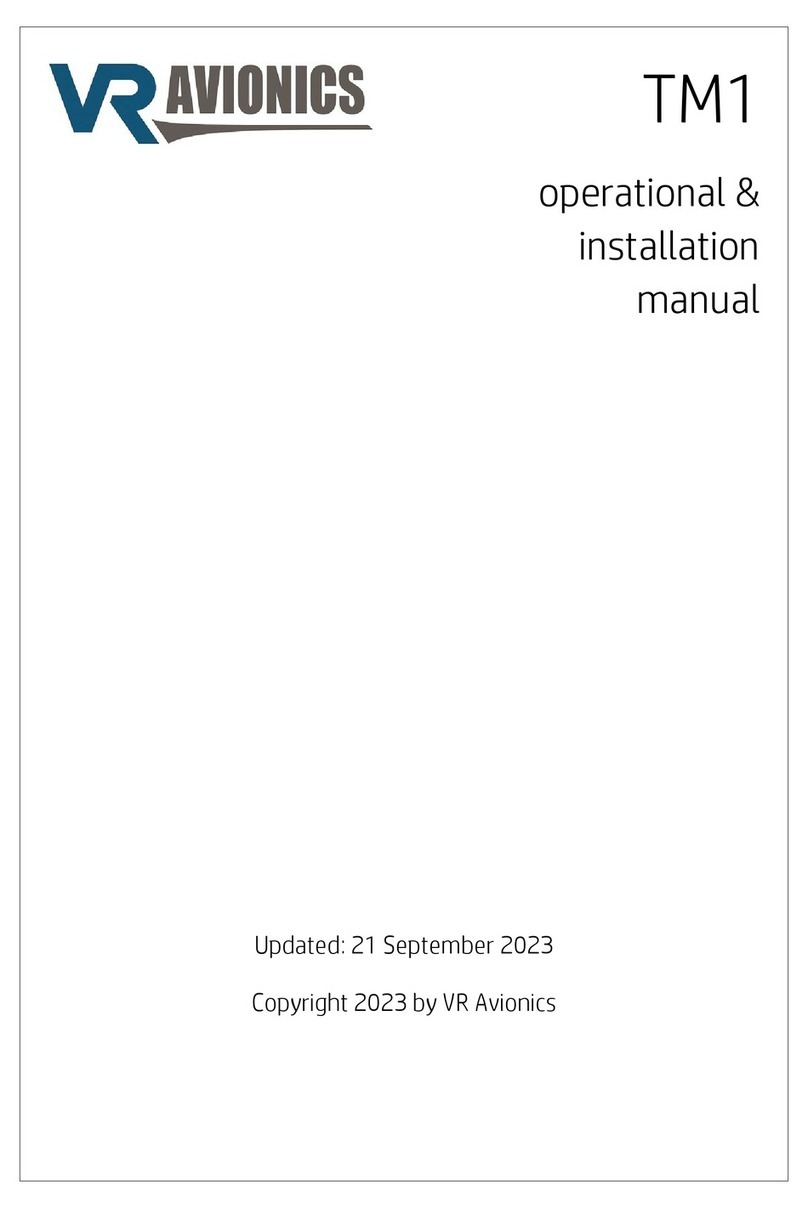
VR Avionics
VR Avionics TM1 Operational and installation manual
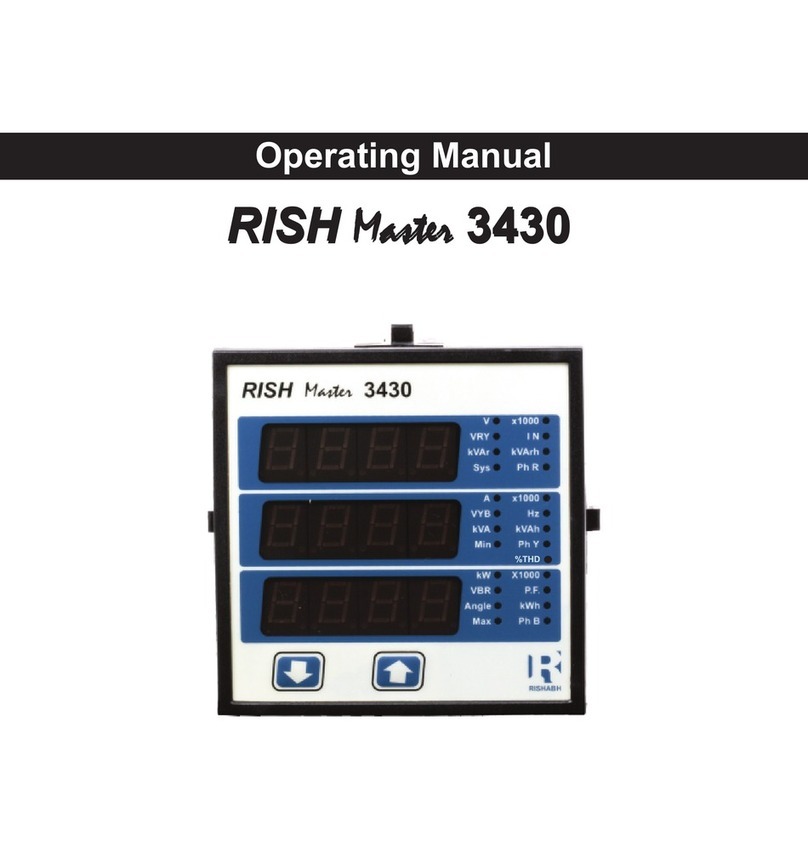
Rish
Rish Master 3430 operating manual
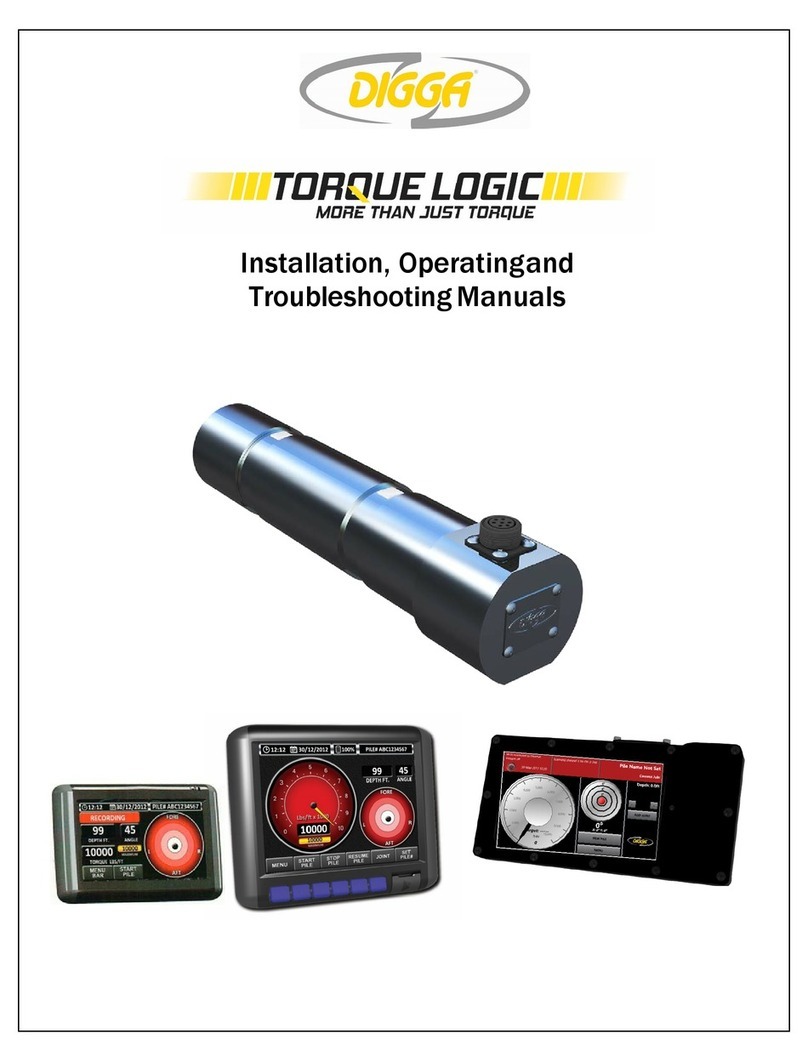
Digga
Digga TORQUE LOGIC Installation, operating and troubleshooting instructions
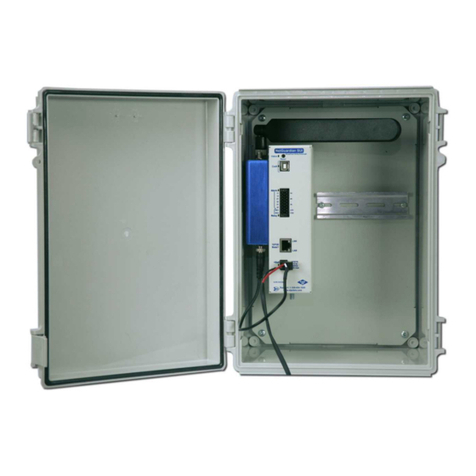
DPS Telecom
DPS Telecom NetGuardian SUI user manual
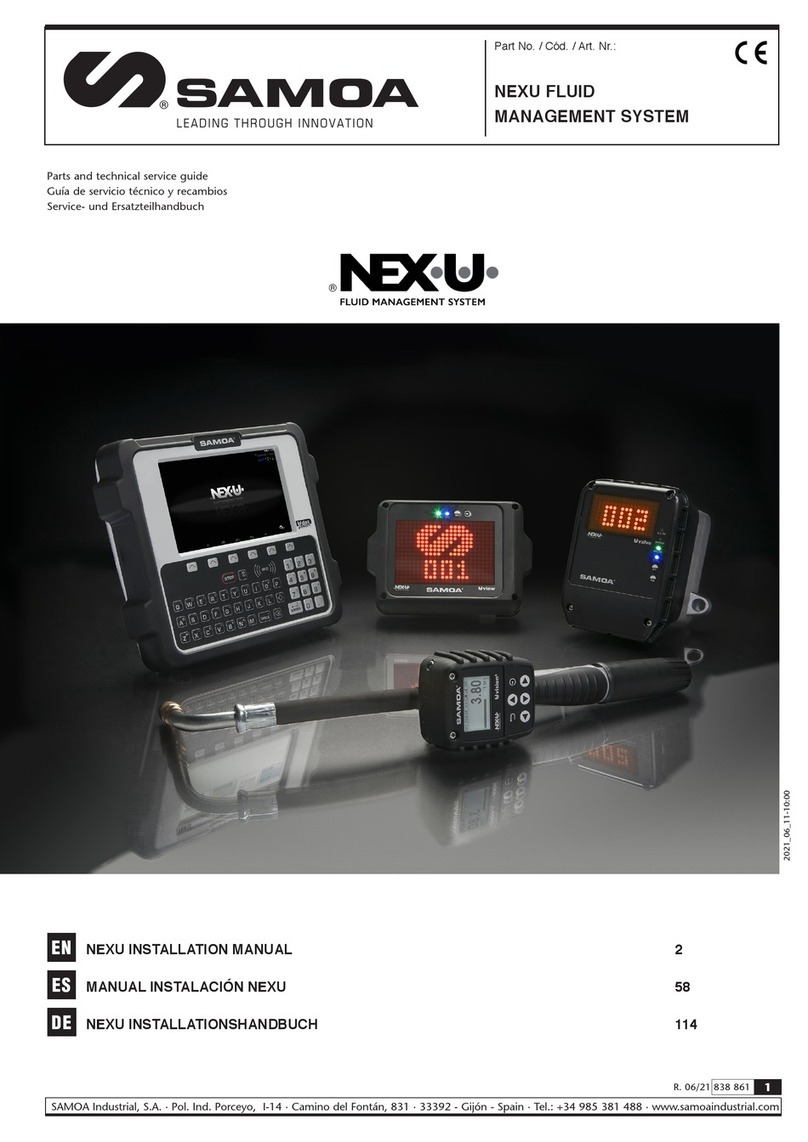
Samoa
Samoa NEXU Parts and technical service guide
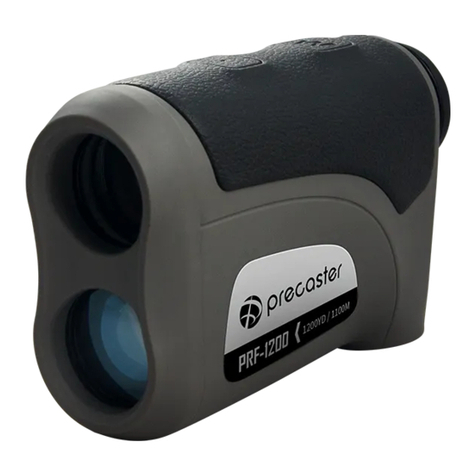
Precaster
Precaster PRF Series manual



